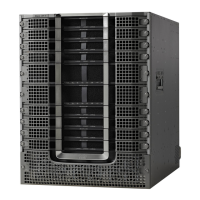•
Two DSG Clients for each Cisco CMTS
•
Two DSG Servers (one for each Cisco CMTS)
Each Cisco CMTS is configured as follows, and the remainder of this topic describes example configurations
that apply to this architecture.
CMTS Headend 1
• DSG Server #1—Connected to Cisco CMTS via IP Multicast, with DSG Server having IP Address
12.8.8.1
• Destination IP Address for the Cisco CMTS—228.9.9.1
• DSG Tunnel Address—0105.0005.0005
•
Downstream #1 Supporting two DSG Clients:
◦ DSG Client #1—ID 101.1.1
◦ DSG Client #2—ID 102.2.2
CMTS Headend 2
• DSG Server #2—Connected to Cisco CMTS via IP Multicast, with DSG Server having IP Address
12.8.8.2
• Destination IP Address for the Cisco CMTS—228.9.9.2
• DSG Tunnel Address—0106.0006.0006
•
Downstream #2 Supporting two DSG Clients:
◦ DSG Client #1—ID 101.1.1
◦ DSG Client #2—ID 102.2.2
Example of Two DSG Tunnels with MAC DA Substitution
In this configuration, and given the two Cisco CMTS Headends cited above, below are the two sets of DSG
rules, with each set applying to each Cisco CMTS, in respective fashion.
These settings apply to DSG #1 and two downstreams:
•
DSG Rule ID 1
•
DSG Client ID 101.1.1
•
DSG Tunnel Address 105.5.5
These settings apply to DSG Rule #2 and two downstreams:
•
DSG Rule ID 1
•
DSG Client ID 102.2.2
•
DSG Tunnel Address 106.6.6
Cisco cBR Series Converged Broadband Routers Application—Voice and Video Configuration Guide
32
Advanced-Mode DOCSIS Set-Top Gateway 1.2 for the Cisco CMTS Routers
Configuration Examples for Advanced-Mode DSG

